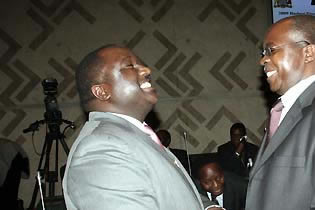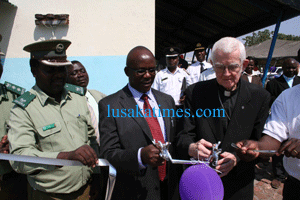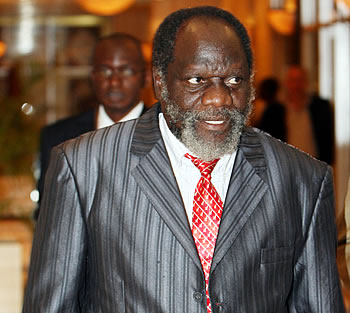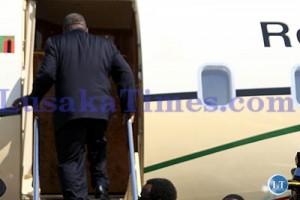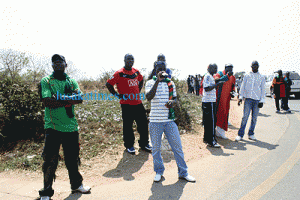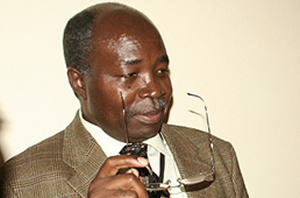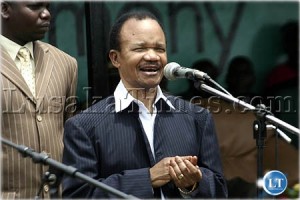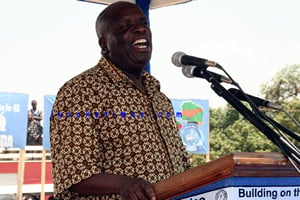 MMD deputy national secretary Chembe Nyangu has challenged expelled Kafulafuta Member of Parliament (MP) George Mpombo and his Chilanga counterpart Ng’andu Magande to prove that they are popular by not challenging the decision to expel them from the ruling party.
MMD deputy national secretary Chembe Nyangu has challenged expelled Kafulafuta Member of Parliament (MP) George Mpombo and his Chilanga counterpart Ng’andu Magande to prove that they are popular by not challenging the decision to expel them from the ruling party.
And the Independent Churches of Zambia (ICOZ) has said the expulsion of Mr Mpombo and Mr Magande has been long overdue and has advised the former ministers against ‘hanging on’ to their seats through court injunctions.
My Nyangu said if the two outspoken MPs were as popular as they claimed they were, they should have just have resigned on their own since it was clear that they were no longer interested to be part of the ruling party.
On Saturday, MMD spokesperson Dora Siliya announced that party’s National Executive Committee (NEC) meeting held in Lusaka unanimously resolved to expel Mr Mpombo and Mr Magande, who had recently been making incessant attacks on President Rupiah Banda and the MMD.
Mr Nyangu said the MMD was ready to meet Mr Mpombo and Mr Magande in the by-elections once the Speaker, who he said was informed about the expulsions, declares the two se
MMD Masaiti District chairperson Michael Katambo challenged Mr Mpombo and Mr Magande to now contest on the opposition political party tickets.
“Since people like Mpombo boasted of being ready to release political landmines and missiles on the MMD. We are now ready to face Mr Mpombo in the political battle field,” Mr Katambo said.
And the MMD Copperbelt Province said the expulsion of Mr Mpombo and Mr Magande was good riddance.
“The truth of the matter is that whether they go at it as independents or as members of the opposition the MMD is ready to finish them politically,” Mr Chilambwe, who is the provincial chairperson, said.
MMD chairperson of security Ronnie Shikapwasha said NEC had authority to expel the duo from the party.
Lieutenant General Shikapwasha said Mr Mpombo had been insulting the party and President Banda for a long time, adding that he had no self discipline.
He said several people had advised Mr Mpombo to desist from attacking the party but he refused to heed the advice.
ICOZ president David Masupa said yesterday in Lusaka that the expulsion of the former Defence minister was long over due because he had kept disparaging the party and its leadership.
Reverend Masupa said to prove his popularity, Mr Mpombo should not run to the courts of law to put an injunction restraining the party from expelling him.
“For Mr Magande we can just advise him to form his party so that he can sell his candidature to the Zambians,” he said.
But when contacted, Mr Mpombo, who said he had not received the expulsion letter, said he was ready to face the MMD in a by-election once the Kafulafuta seat was declared vacant by the Speaker of the National Assembly.
He said he would only make a decision after receiving his letter of expulsion.
“We are not going to listen to chaps like Masupa, I haven’t yet sat with my family to decide the way forward, after all I have every constitutional right which should not be interfered with,” he said.
Mr Mpombo said his popularity in Kafulafuta could not be questioned because there was evidence that the people of that area voted for him overwhelmingly.
Mr Magande said he had not received his letter of expulsion and, therfore, did not know the details of the offence he was alleged to have committed.
He told ZNBC News that he would comment after consulting with his constituents.
And MMD Lusaka provincial deputy chairperson Henry Mutiti has said the ruling party was ready for the by-election in Chilanga Constituency, and that his office was already overwhelmed with people seeking adoption as parliamentary candidates.
[ Times of Zambia ]



